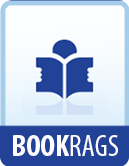Page 450. The Sparrow and the Hen.
(?) Charles Lamb. Mrs. Glasse would be Hannah Glasse, of The Art of Cookery made Plain and Easy, 1747.
Page 451. Which is the Favourite?
(?) Mary Lamb.
Page 451. The Beggar-Man.
By John Lamb, Charles and Mary’s brother; as we know from a letter from Charles Lamb to Robert Lloyd.
Page 452. Choosing a Profession.
By Mary Lamb, as we know on the evidence of Robert Lloyd.
Page 453. Breakfast.
This also, on Robert Lloyd’s evidence, is by Mary Lamb.
Page 454. Weeding.
(?) Mary Lamb.
Page 455. Parental Recollections.
(?) Charles Lamb. The first line was quoted by him in the Elia essay “The Old and the New Schoolmaster.” The poem may be considered as the poetical correlative of the beautiful Elia essay “Dream-Children.”
Page 455. The Two Boys.
By Mary Lamb. Quoted by Lamb, as by “a quaint poetess,” in his Elia essay “Detached Thoughts on Books and Reading.”
Page 456. The Offer.
(?) Mary Lamb.
Page 456. The Sister’s Expostulation on the
Brother’s Learning
Latin.
(?) Charles Lamb. Many years later Mary Lamb wrote a sonnet in Blackwood on a kindred subject, addressed to Emma Isola. Mary Lamb taught Latin to Mary Cowden Clarke (when Mary Victoria Novello) and to William Hazlitt’s son, also to Miss Kelly.
Page 457. The Brother’s Reply.
(?) Charles Lamb.
Page 459. Nurse Green.
(?) Mary Lamb.
Page 460. Good Temper.
(?) Charles Lamb.
Page 460. Moderation in Diet.
(?) Mary Lamb. The “splendid shilling” (borrowed from Phillips’ parody of Milton) suggests a touch of Charles Lamb.
Page 462. Incorrect Speaking.
(?) Mary Lamb.
Page 462. Charity.
(?) Mary Lamb.
Page 463. My Birth-day.
(?) Mary Lamb.
Page 464. The Beasts in the Tower.
(?) Charles Lamb. There is a hint of Blake’s “Tiger, tiger burning bright” (which Lamb so greatly admired) in—
That cat-like beast that to and fro
Restless as fire doth ever go.
Page 466. The Confidant.
(?) Mary Lamb.
Page 466. Thoughtless Cruelty.
(?) Mary Lamb.
Page 467. Eyes.
(?) Charles Lamb.
Page 468. Penny Pieces.
(?) Mary Lamb.
Page 469. The Rainbow.
(?) Mary Lamb.
Page 470. The Force of Habit.
(?) Mary Lamb.
Page 470. Clock Striking.
(?) Charles Lamb. The late R.H. Shepherd, in his edition of Lamb, remarks upon the resemblance between lines 10 and 11 and the couplet in “Hester”—




